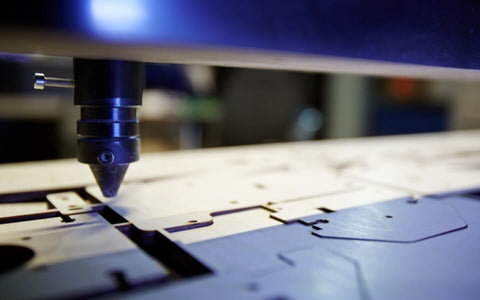Latest Trends to Watch in the Laser Engraving Industry in 2024
The year 2024 is not only the year of the Paris Olympics but also a revolution in the laser engraving industry. This revolution is fueled by major trends that are reshaping the landscape of laser engraving and cutting, propelling this technology into a new era of creativity, efficiency, and innovation.
The laser engraving industry, with its cutting-edge machines like the xtool d1 pro 20w, is undergoing a technological revolution in 2024. Wood engravers and metal laser engravers, once reserved for professionals, are now accessible to amateurs thanks to portable and affordable models. Here are the major trends that will redefine the landscape of laser engraving and cutting in the years to come.
Intelligent Automation: Beyond Simple Engraving
With advancements in laser engraving technology, particularly with the use of models like Polar and Max, the market has witnessed unprecedented satisfaction in terms of personalized and custom-made products. This trend is supported by a deep integration of automation technology and artificial intelligence (AI), which together have facilitated large-scale customized production. In this section, we will explore how these technologies are transforming traditional production methods to offer consumers a unique product experience.
AI-driven Custom Design
The high-precision laser head of the Polar model is capable of processing extremely detailed designs, while the Max model excels in quickly executing engraving tasks on large surfaces. With the integration of AI, these two models not only automatically recognize design patterns uploaded by customers but also optimize these designs using machine learning algorithms, ensuring the accuracy and consistency of engraving results. AI can learn from historical data to anticipate customers' customization needs and adjust production parameters in advance, reducing response time and increasing production efficiency.
Seamless Customized Production Process
The integration of AI is not limited to the design phase. Throughout the production process, the AI system can monitor the real-time status of laser engraving machines and dynamically adjust the production strategy based on the distinct characteristics of the Polar and Max models. For example, for custom products requiring fine engraving in small quantities, the system can prioritize the use of the Polar model, while for large quantity orders requiring fast production, the Max model is more suitable. This dynamic adaptation ensures the efficiency of the production process.

Mass Customization: Putting the Customer at the Center of Design
The Paris Olympics highlight the need for customization with products such as engraved medals, souvenirs, and sports equipment. In this context, laser engravers are adopting service models that allow customers to actively participate in the design of their products. Laser engraving becomes a means of personal expression, offering customers the opportunity to create unique objects that tell their own story.

Online Educational Resources: Expanding Access to Laser Engraving
The proliferation of online educational platforms, such as "Mon Atelier en Ville," has opened up access to learning laser engraving to a wider audience. In 2024, these resources are enriched with interactive tutorials, live webinars, and virtual courses that enable anyone, from amateurs to professionals, to master laser engraving and cutting techniques. Online education has become a key driver for innovation and the adoption of new technologies in the field.

Integration with Complementary Technologies: A Creative Synergy
Laser engraving is no longer limited to a standalone process. It is now integrated with complementary technologies such as 3D printing and artificial intelligence, offering unprecedented design and manufacturing capabilities. Laser engravers can work in collaboration with 3D printers to create hybrid prototypes or finished products that combine multiple materials and techniques. Artificial intelligence enables optimization of engraving patterns, shape recognition, and even real-time adjustments based on performance data analysis.

Conclusion
In 2024, the trends of intelligent automation, mass customization, online education, and technological integration are converging to propel the laser engraving industry towards new horizons. The Paris Olympics serve as a catalyst, highlighting the versatility and adaptability of this technology. With these advancements, laser engraving is poised to redefine not only the market for personalized mementos but also the way we design and produce objects in various sectors, from craftsmanship to industrial manufacturing. The future of laser engraving is bright, and 2024 marks a brilliant starting point.
Related Articles











































